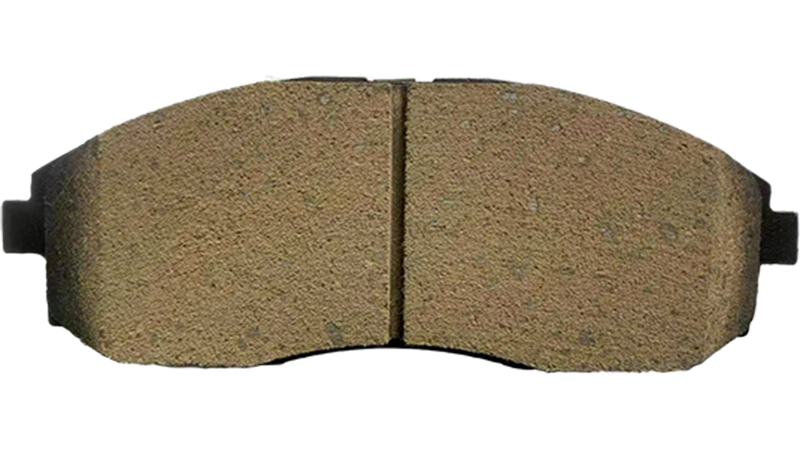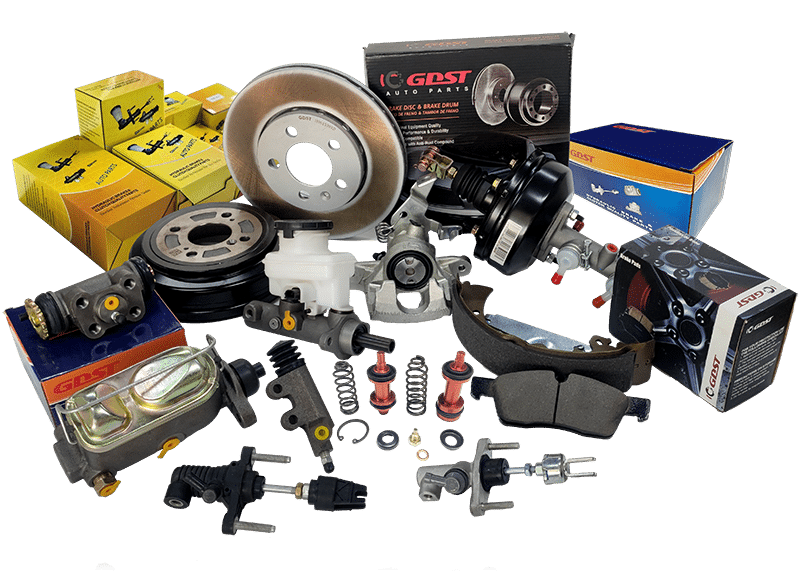Brake pads are essential for the braking system of any vehicle, as they are important in ensuring safe and effective stops.
Knowing the different types of brake pads can help you make the right choices regarding your vehicle’s maintenance and performance.
This guide will explain the types of brake pads and their advantages and disadvantages.
What Are The Types of Brake Pad?
Organic Brake Pads

Organic brake pads are mainly composed of organic resin, fillers, and friction materials, without any metal.
Pros of organic brake pads:
- Quiet: Less noise is generated when braking, improving driving comfort.
- Environmentally friendly: no harmful substances such as asbestos, harmless to the environment.
- Low cost: Relatively low material and manufacturing costs, suitable for economical vehicles.
Cons of organic brake pads:
- Temperature sensitivity: performance may deteriorate in hot environments and are not suitable for long periods of high-speed driving or extreme driving conditions.
- Poor wear resistance: Wears out faster than other types of brake pads and requires more frequent replacement.
- Limited braking power: braking power may be insufficient under extreme braking conditions.
Low-Metallic Brake Pads

Low-metallic brake pads are made from a mixture of metal fibers, such as copper, iron, or steel, combined with other materials.
Pros of low metallic brake pads:
- Moderate braking power: Suitable for every day and a wide range of driving conditions, neither too strong nor too weak.
- Better durability: improved abrasion resistance and longer service life than organic brake pads.
- Better thermal stability: maintains good braking performance at high temperatures.
Cons of low metallic brake pads:
- Noise and dust: may produce more noise and dust compared to some high-end brake pads.
- Brake Disc Wear: There may be some wear and tear on the brake discs over long periods.
- Performance limitations: may not perform as well as high-end brake pads under extreme driving conditions.
Semi-Metallic Brake Pads

Semi-metallic brake pads strike a balance between organic and metallic pads. They contain a mix of metallic and non-metallic materials, which provides a good combination of performance and durability.
Pros of semi-metallic brake pads:
- Strong braking power: Provides strong braking power, suitable for driving conditions that require frequent braking.
- Good high-temperature resistance: can still maintain stable braking performance under a high-temperature environment.
- Long service life: good abrasion resistance and relatively long service life.
Cons of semi-metallic brake pads:
- Higher noise level: A higher noise level may be generated during operation.
- More dust: More brake dust is generated, which may affect the cleanliness of the wheels and the surrounding environment.
- Higher wear on brake discs: Long-term use may cause faster wear on brake discs.
Ceramic Brake Pads

Ceramic brake pads are mainly made of ceramic materials, without any metal.
Pros of ceramic brake pads:
- Excellent high-temperature resistance: maintains excellent braking performance in high-temperature environments.
- Gentle on brake rotors: extend the lifespan of the brake system.
- High abrasion resistance: Long brake pad life reduces the frequency of replacement.
- Low dust & no noise
Cons of ceramic brake pads:
- Higher cost: Ceramic brake pads are more expensive than other materials.
- Slightly weaker braking power: Initial braking power may not be as good as semi-metallic brake pads in extreme cold temperatures.
- Harder braking feel: Some drivers may find the braking feel of ceramic brake pads to be harder.
How to Choose the Right Brake Pads?

When choosing brake pads, we should consider the model of your car, driving habits, road conditions, etc.
For example, if you drive in a city with frequent stop-and-go traffic, organic or low-metallic pads may be more suitable.
If you often drive in high temperatures or engage in heavy-duty tasks, semi-metallic brake pads might be a better choice.
If you drive high-end vehicles or race cars, or seek the ultimate in braking performance and comfort, ceramic brake pads will be your ideal choice.


